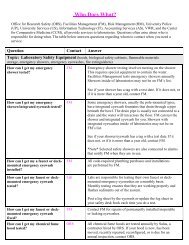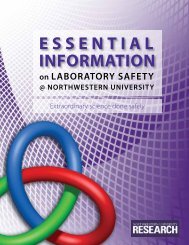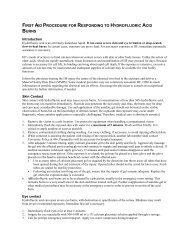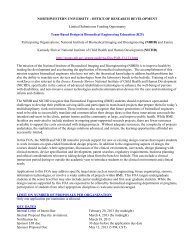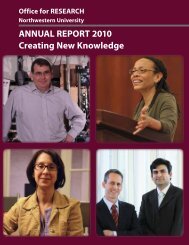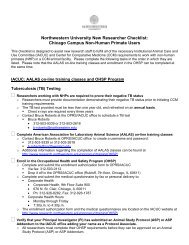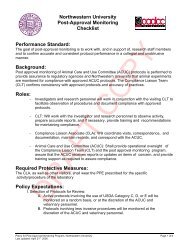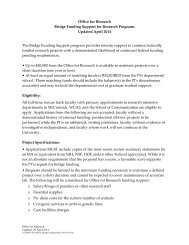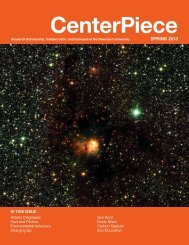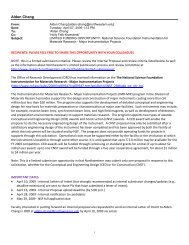annual report 2011 - Office for Research - Northwestern University
annual report 2011 - Office for Research - Northwestern University
annual report 2011 - Office for Research - Northwestern University
You also want an ePaper? Increase the reach of your titles
YUMPU automatically turns print PDFs into web optimized ePapers that Google loves.
Evghenii Gaburov studies accretion discs, which are structures <strong>for</strong>med by<br />
di�use material in orbital motion around a central body. The image on the<br />
left shows a disc (in blue) being <strong>for</strong>med from the matter of a star (in yellow).<br />
The image on the right is a computer model of a magnetically levitating<br />
accretion disc.<br />
took place August 31 through September 3, <strong>2011</strong>.<br />
Columbia <strong>University</strong>’s David Helfand, president-elect of<br />
the American Astronomical Society, was one of several<br />
faculty members from across the nation who addressed<br />
and interacted with the conference participants.<br />
“The point was this: the areas where prize postdoctoral<br />
fellows do research represent the future of astronomy,”<br />
Kalogera says. “Because it’s these young people who<br />
will become the faculty in the next decade.”<br />
This topic was a natural choice <strong>for</strong> CIERA, which has<br />
several outstanding postdoctoral researchers of its own.<br />
A large portion of the center’s budget funds the CIERA<br />
Postdoctoral Fellows Program <strong>for</strong> prize postdocs at<br />
<strong>Northwestern</strong> to pursue their own independent research.<br />
Other postdocs have moveable fellowships from external<br />
agencies such as NSF or NASA that allow them to attend<br />
a university of their choice. Now <strong>Northwestern</strong> has its<br />
�rst Hubble Fellow, a recipient of the most prestigious<br />
and competitive fellowship in astrophysics.<br />
<strong>Northwestern</strong>’s First Hubble Fellow<br />
“If you look back 50 years, we never had an external<br />
fellowship,” Kalogera says. “Now we have a Hubble<br />
Fellow. He could have gone anywhere he wanted—<br />
Harvard, Princeton, or Caltech—but he decided to<br />
come here. This says something very positive about our<br />
astronomy program.”<br />
Evghenii Gaburov<br />
CIERA’s Hubble Fellow is Evghenii Gaburov, who holds<br />
a double PhD in computer science and astrophysics<br />
from the <strong>University</strong> of Amsterdam in the Netherlands.<br />
He uses <strong>Northwestern</strong>’s Quest high-per<strong>for</strong>mance<br />
computing system to complete numerical calculations<br />
that will improve understanding of magnetically<br />
levitating accretion discs around black holes. An<br />
accretion disc is a structure <strong>for</strong>med by scattered<br />
material that collects around a central body, such as<br />
a black hole or star, due to gravity. Gaburov is curious<br />
about how these structures <strong>for</strong>m and evolve.<br />
“I had colleagues in Amsterdam and at the Leiden<br />
Observatory who got their PhDs at <strong>Northwestern</strong>,”<br />
Gaburov says of his decision to come to the <strong>University</strong>.<br />
“There are strong faculty members here whose research<br />
overlaps with my interests.”<br />
Excellence in <strong>Research</strong> | Annual Report <strong>2011</strong> 17




